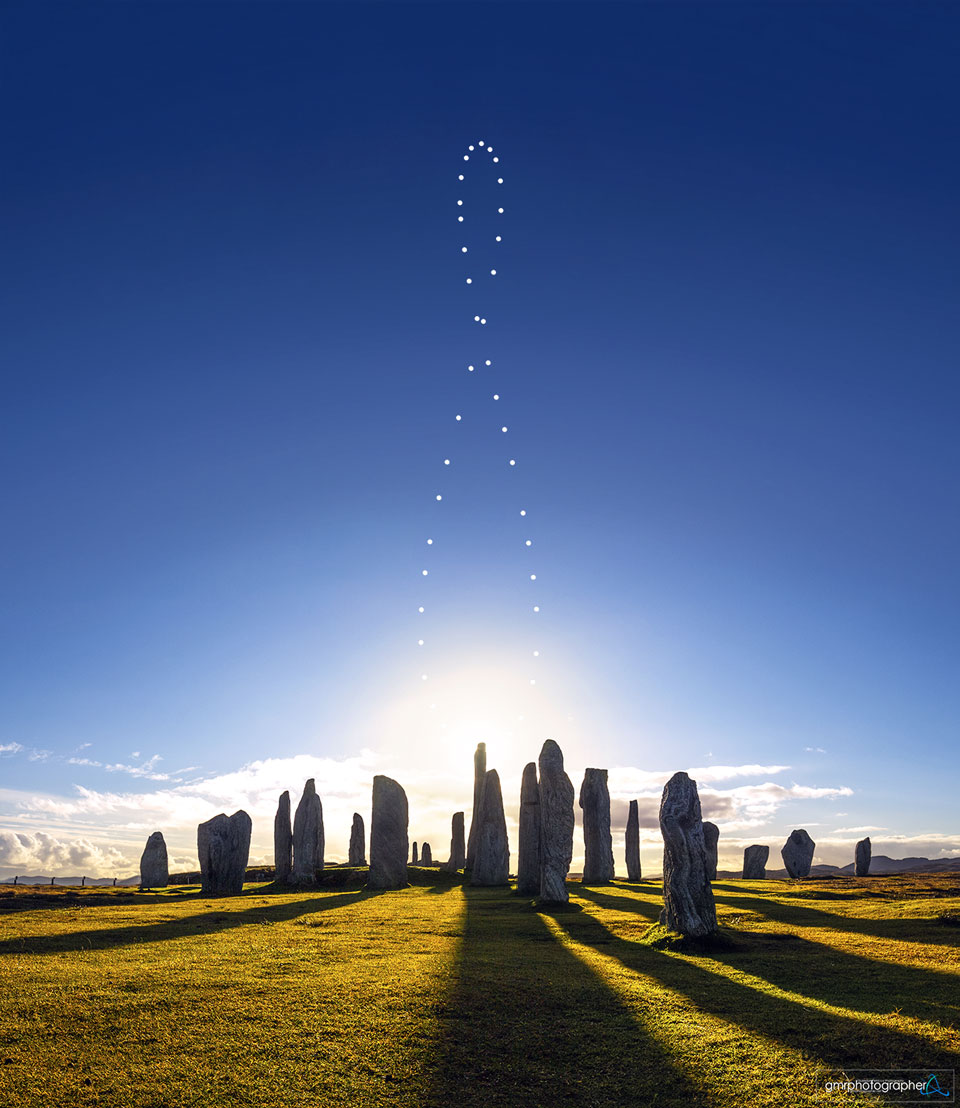2022年9月18日
Analemma over the Callanish Stones
Image Credit & Copyright: Giuseppe Petricca
Explanation: If you went outside at the same time every day and took a picture that included the Sun, how would the Sun’s position change? A more visual answer to that question is an analemma, a composite image taken from the same spot at the same time over the course of a year. The featured analemma was composed from images taken every few days at noon near the village of Callanish in the Outer Hebrides in Scotland, UK. In the foreground are the Callanish Stones, a stone circle built around 2700 BC during humanity’s Bronze Age. It is not known if the placement of the Callanish Stones has or had astronomical significance. The ultimate causes for the figure-8 shape of this and all analemmas are the tilt of the Earth axis and the ellipticity of the Earth’s orbit around the Sun. At the solstices, the Sun will appear at the top or bottom of an analemma. The featured image was taken near the December solstice and so the Sun appears near the bottom. Equinoxes, however, correspond to analemma middle points — not the intersection point. This coming Friday at 1:04 am (UT) — Thursday in the Americas — is the equinox (“equal night”), when day and night are equal over all of planet Earth. Many cultures celebrate a change of season at an equinox.
Explore Your Universe: Random APOD Generator
Tomorrow’s picture: lightning layer
秋分: 卡拉尼什巨石阵上空的日行迹
影像提供与版权: Giuseppe Petricca
说明: 如果你每天在相同的时间到走出门外,拍摄一张捎带太阳的照片,那么太阳在一年之中的位置会如何变化?此问题视觉化的答案是一个日行迹,一种在一年之中,从同一地点同一时间所拍摄的影像之组合图。上面这张日行迹主题影像,是在英国苏格兰外赫布里底群岛的卡拉尼什村,每隔数天的下午4点拍摄的照片组合而成。影像前景的卡拉尼什 巨石阵,是在人类青铜器时代、纪元前2700年左右建造的巨石阵。不过,目前仍然不清楚卡拉尼什巨石阵的排列,在现在或过去是否有任何天文学的意涵。造就这个8字形及其他日行迹的真正原因,是倾侧的地轴和地球绕太阳公转轨道的椭圆率。在夏、冬至时,太阳分别位在日行迹的顶端和底端,而春、秋分则在日行迹的中间(非交叉点)附近。今年的秋分将在下星期五的世界时1:04 UT(+8时区为9月23日09:04)降临 ,届时世界各地所见到的白画和夜晚皆等长。许多文明会在季节更迭的分点时举行庆典。 (analemma 日行迹; Callanish Stones 卡拉尼什巨石阵)
探索你的宇宙: 随机APOD生成器
明日的图片: lightning layer







